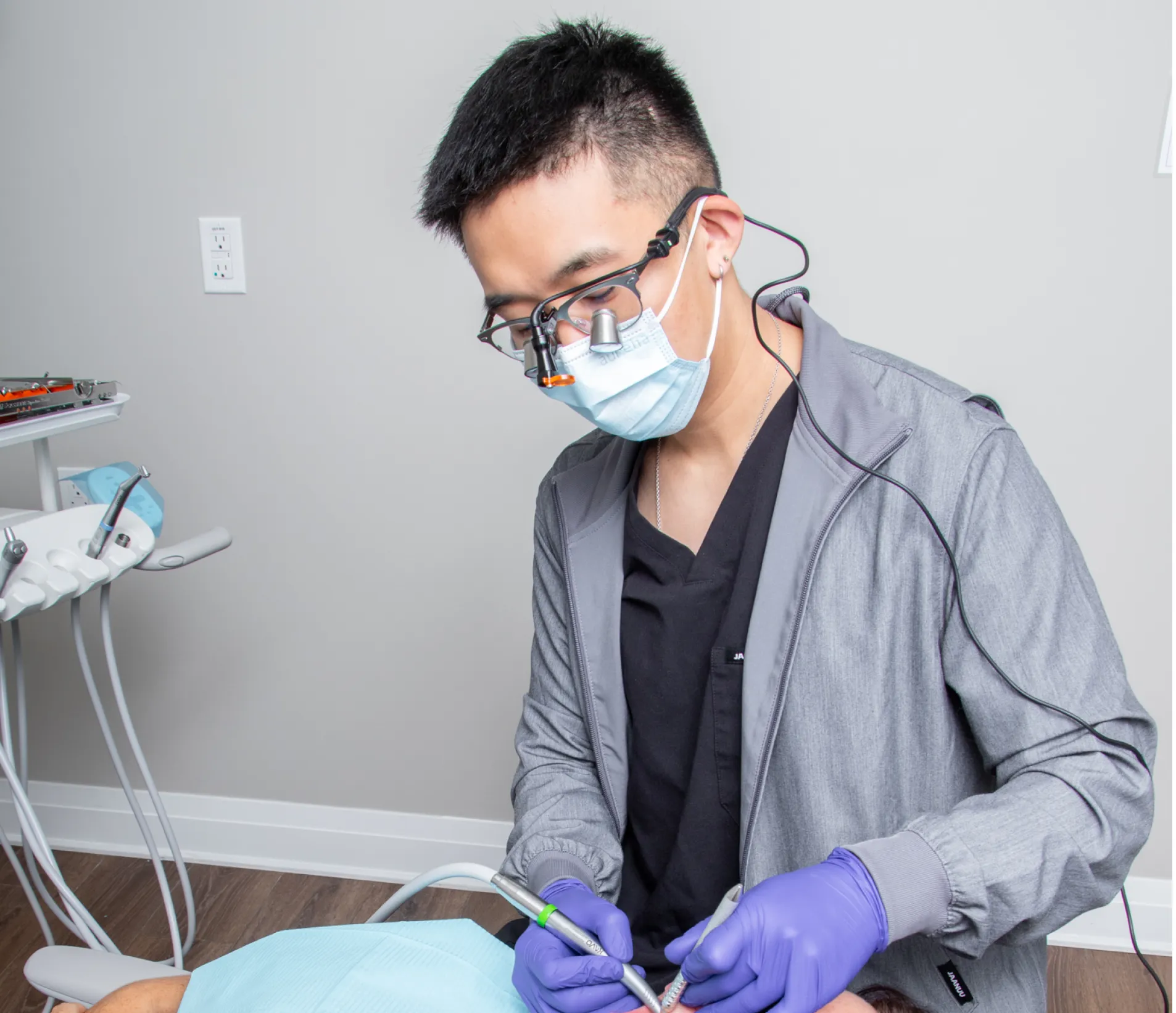.svg)
Healthy gums are the foundation of a healthy smile. Periodontal care is crucial for preventing gum disease, protecting your teeth, and maintaining overall oral health. Dr. Matthew Yoon and our compassionate team are dedicated to providing comprehensive periodontal care to help you achieve and maintain healthy gums and teeth for life.

Periodontal disease, or gum disease, affects the gums and the tissues that support your teeth. It starts as gingivitis, which is a mild form of gum disease, and can progress to more severe stages, leading to tooth loss if left untreated. Periodontal care focuses on diagnosing, treating, and preventing gum disease, as well as addressing any gum issues you may have to keep your smile in optimal health.
At Lansdowne Place Dental, we offer a range of periodontal treatments, from preventive care and cleanings to more advanced procedures for patients with gum disease. Our goal is to provide personalized care that helps you maintain healthy gums and reduce your risk of gum disease in the future.
If you have early signs of gum disease (gingivitis), we provide professional cleanings to remove plaque and tartar, along with instructions on improving your home care routine. For more advanced cases of gum disease (periodontitis), we offer deeper treatments such as scaling and root planing, which involves cleaning below the gum line to remove bacteria and smooth the tooth roots, encouraging gum reattachment.
Scaling and root planing is a deep cleaning procedure used to treat moderate to severe gum disease. During this procedure, Dr. Yoon will remove plaque and tartar buildup from both above and below the gum line. The tooth roots are then smoothed to promote healthy gum reattachment. This treatment helps prevent further progression of gum disease and promotes the healing of gum tissue.
Once gum disease has been treated, ongoing periodontal maintenance is essential to ensure that your gums remain healthy. Periodontal maintenance includes more frequent cleanings and exams (every 3–4 months) to monitor your gum health and prevent the return of gum disease. This routine helps keep your teeth and gums in top condition and prevents further complications.
If gum recession has occurred due to gum disease or other factors, gum grafting may be necessary to restore lost tissue. During this procedure, healthy tissue is taken from another part of your mouth and used to cover the exposed tooth roots. Gum grafting not only helps improve the appearance of your gums but also protects your teeth from further damage and sensitivity.
For patients with advanced gum disease and deep gum pockets, pocket reduction surgery may be necessary. This procedure involves folding back the gum tissue to clean deeper into the pockets, removing bacteria, and then securing the tissue back in place. Pocket reduction surgery helps reduce the size of deep gum pockets and promotes healing, preventing further damage to the gums and teeth.
Crown lengthening is a surgical procedure to remove excess gum tissue and expose more of a tooth’s surface. It’s typically performed when a tooth is decayed below the gum line, making it difficult to restore with a crown. Crown lengthening is also used in cosmetic dentistry to create a more balanced, aesthetically pleasing smile by reshaping the gum line.
During your first visit, Dr. Yoon will carefully evaluate your gum health. This may include taking digital X-rays and performing a thorough examination of your teeth and gums to check for signs of gum disease, such as swelling, bleeding, or pockets between the gums and teeth. Based on this evaluation, Dr. Yoon will recommend the best course of treatment for your needs.
Once we’ve assessed your gum health, we will develop a personalized treatment plan to address any issues you may have. This plan may include preventive care, deep cleanings, or more advanced periodontal treatments such as scaling and root planing, gum grafting, or surgery.
Once your treatment begins, Dr. Yoon will guide you through each step of the process, explaining what to expect and ensuring your comfort. After your initial treatment, we will schedule follow-up appointments to monitor your progress and provide ongoing care to maintain your gum health.
After treatment, it’s essential to maintain regular checkups and cleanings to ensure your gums stay healthy. We will also provide guidance on brushing, flossing, and other oral hygiene habits to help prevent gum disease and maintain a beautiful, healthy smile.
The early signs of gum disease include swollen, red, or bleeding gums, especially when brushing or flossing. Bad breath, receding gums, and loose teeth are symptoms of more advanced gum disease. If you notice any of these signs, it's important to visit your dentist for a check-up.
Gum disease is treated based on its severity. For mild gum disease (gingivitis), a professional cleaning and improved oral hygiene are typically sufficient. For more advanced gum disease (periodontitis), treatments like scaling and root planing, gum grafting, and surgery may be necessary to restore gum health.
Yes! Good oral hygiene practices such as regular brushing, flossing, and visiting your dentist for routine checkups and cleanings are key to preventing gum disease. Additionally, avoiding smoking, eating a healthy diet, and managing health conditions like diabetes can reduce your risk of developing gum disease.
Gum surgeries are typically performed under local anesthesia, so you should not feel pain during the procedure. Afterward, mild discomfort, swelling, and tenderness may occur, but these can be managed with over-the-counter pain relievers and following Dr. Yoon’s aftercare instructions.
Recovery time varies depending on the procedure performed. For most gum surgeries, recovery takes a few days to a week. For more complex procedures like gum grafting or pocket reduction surgery, recovery may take longer. Dr. Yoon will provide you with specific instructions to ensure a smooth and speedy recovery.